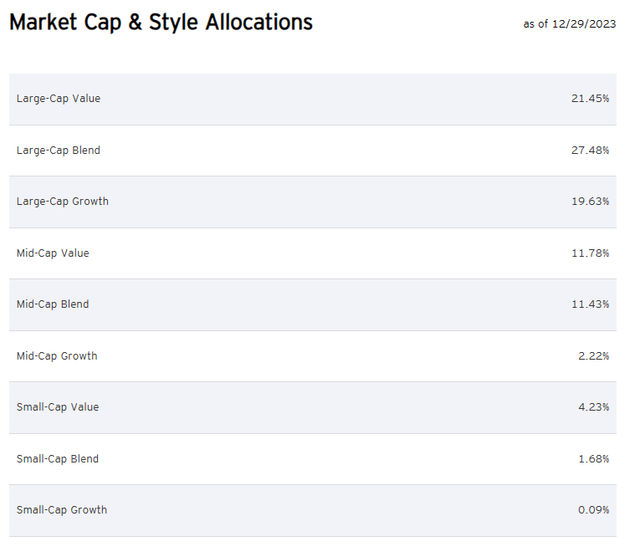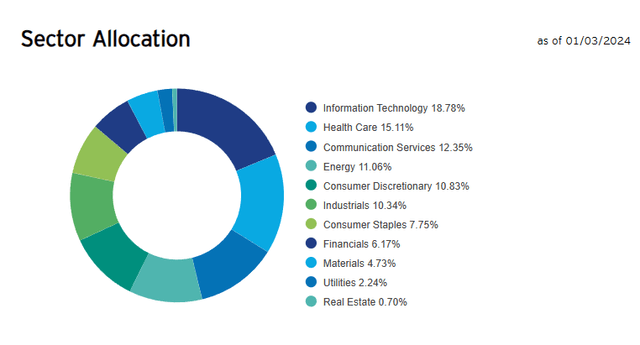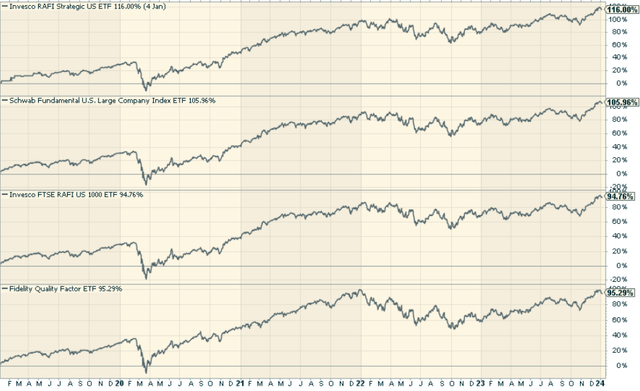ardasavasciogullari
Smart Beta ETFs are a type of investment fund that uses alternative index construction rules instead of the traditional market capitalization-weighted indices. Smart Beta strategies seek to passively follow indices while also taking advantage of certain active investment strategies to improve returns, manage risks, or increase diversification.
Smart Beta ETFs are becoming increasingly popular as investors look for ways to potentially improve returns and manage risk, while still enjoying the benefits of passive management and lower costs compared to traditional actively managed funds. However, it’s crucial for investors to understand the specific strategies and risks associated with Smart Beta ETFs, as their performance can differ significantly from the broader market.
Having said that, I never liked the term “smart beta” as it sounds like a marketing gimmick more than an investment style. Despite my distaste for the term, there are interesting funds that try to do something different when it comes to core equity exposure. That’s where the Invesco RAFI™ Strategic US ETF (IUS) comes into play. This is a smart-beta investment vehicle that aims to measure the performance of high-quality, large-sized US companies. The ETF was introduced in September 2018 as part of a broader suite of strategic ETFs from Invesco. It employs a sophisticated fund strategy that incorporates proprietary measures of business size and quality, helping investors potentially avoid value traps.
Fund Strategy and Composition
IUS adopts a unique approach to stock selection and weighting. It employs a multi-step investment strategy that assigns a business-size score and a quality score to each stock. The business-size score is determined by considering four measures of company size: sales, operating cash flow, total return of capital (dividends and share repurchases), and book value. The quality score, on the other hand, is derived from two factors: efficiency and growth.
Efficiency is calculated as the ratio of sales-to-assets in the prior year. It signifies a company’s ability to generate revenues from its assets. Growth, on the other hand, is measured as the percentage change in the ratio of sales-to-assets over the past five years. A positive change indicates that the company is improving its ability to generate business from its assets, which is a sign of a quality enterprise.
IUS holds around 554 stocks, with a significant tilt towards the value factor.
IUS’s sector composition is diverse, with the largest sectors being Technology, Healthcare, and Energy.
Peer Comparison
Compared to its peers, such as the Invesco FTSE RAFI US 1000 Portfolio (PRF), Schwab Fundamental U.S. Large Company Index ETF (FNDX), and Fidelity Quality Factor ETF (FQAL), IUS has managed to deliver robust returns since its inception in 2018, outperforming all three funds.
Pros and Cons of Investing in IUS
Investing in IUS comes with its set of advantages and potential drawbacks. On the positive side, IUS offers exposure to high-quality, large-sized US companies, potentially helping investors avoid value traps. It also employs a unique strategy that considers both business size and quality, providing a balanced and diversified portfolio.
However, on the flip side, IUS’s sector composition may make it susceptible to sector-specific risks. Additionally, while it has outperformed its peers, past performance is not a guarantee of future returns.
Conclusion: Is IUS a Good Investment?
The Invesco RAFI™ Strategic US ETF is a good spin on gaining exposure to high-quality, large-sized US companies. Its unique strategy of assigning business-size and quality scores to stocks offers a balanced and diversified portfolio. I think for those investors that are leery of staying in the NASDAQ or S&P 500, this can serve as a good core replacement with a potentially different performance dynamic on a go-forward basis.






